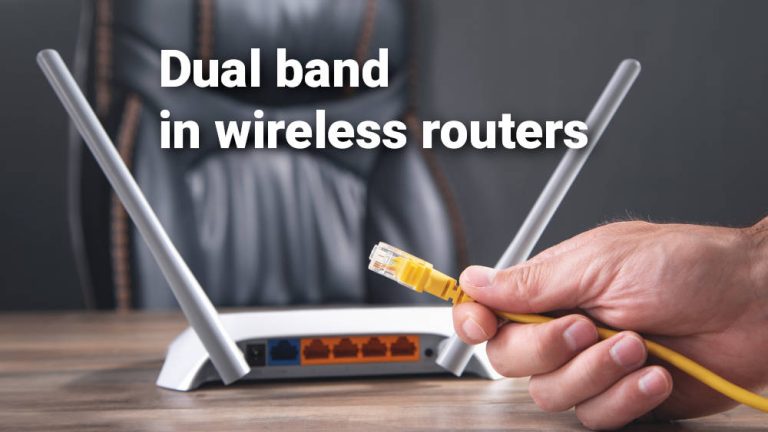I’ve seen various explanations and questions about this term: dual-band. Well, dual-band wireless routers, to be more precise. Often quite abstract and without any meaning. So I’ve figured I should write a small article explaining this dual band thing once and for all, in an easy to understand way.
ELI5 explanation: A dual band-wireless router is a router that is capable of operating on the 2.4 GHz band and on the 5 GHz band. (hence the dual-band name)
But recently, 6 GHz (WiFi 6) wireless bands have been available too! You’ll often find those routers named such as tri-band or quad-band. But be careful, as some routers are tri-band but actually have 1 x 2.4 GHz and 2 x 5 GHz operation modes. So being ‘beyond’ dual-band does not guarantee the newest technology. Read the product specifications carefully.
AND THAT’S IT!
That’s what dual band refers to in wireless routers. It has nothing to do with actual performance or other capabilities. Other stuff has its own naming. You cannot tell almost anything about the router’s performance just by stating that it is dual band.
Simultaneous dual-band wireless routers
An important thing to look out for, even if routers not capable of this are slowly disappearing, is the fact that we want a router that has simulatenous dual-band. That means it can operate and emit 2.4 GHz signal and 5 GHz signal at the same time.
This is important because if we have older devices capable of only 2.4 GHz, and our router cannot simultaneously emit 5 GHz signal, the newer devices that can benefit from the speeds a 5 GHz signal offers, will be stuck running on the lower speed of 2.4 GHz.
Dual-band routers speed
It’s not that it’s deceiving marketing. We just need to read the label/packaging carefully.
You’ll often see numbers like 1900, 1600 and even labeled as speeds up to 1900 Mbps. Or ‘cumulated speeds up to’ and such wordings. This does not mean that one device will get to reach those wireless speeds!
Usually, the norm is for manufacturers to add up all the speeds from each band. So if we take the Archer C5400 (AC5400) from TP-Link (which is a great router btw!), the manufacturer is honest by informing us that the cumulated speed is about 5334 Mbps.
But they are explaining (in the technical specifications part on the product page) that actually, the router has 2 x 5 GHz bands, each capable of up to 2167 Mbps and one 2.4 GHz band capable of up to 1000 Mbps. Sum them all together, and you get 5334 Mbps!
But it’s false to assume that you’ll reach that.
And anyway, you’ll probably never achieve full speed – wireless signal is very prone to interferences and other factors, so it would be unrealistic to expect 2167 Mbps on the dot. But it would be dumb to expect 5334 Mbps because nobody is saying that’s the speed you can expect from any wireless device conected to that router.
Conclusions
I hope this was clear to anyone. Dual-band is great! But don’t take it as the only thing to look out for when shopping for a wireless router (yes, I am ranting because I saw several people saying only this when recommending a router: just get a dual-band one! FFS!). There’s more to it!
We’ll take several popular wireless terms and explain them one by one, so keep on eye on the blog!
Found this helpful? Share it!


